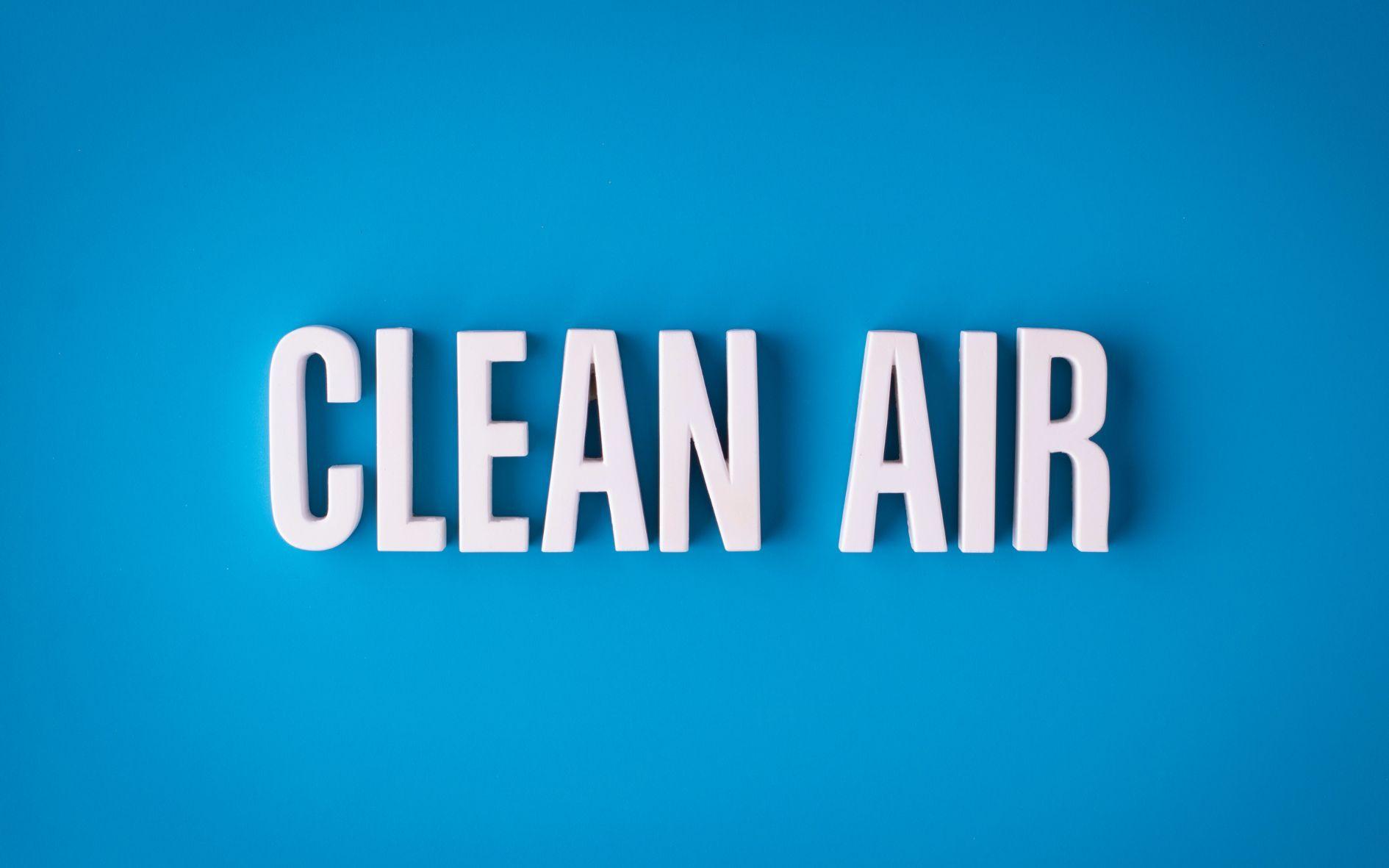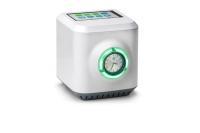You are reading: Do Viruses Travel in the Air?
05 September 2022
6min read time
Brooke Payne
Do Viruses Travel in the Air?
Share:

Key Insights
- Viruses can be spread many ways including through the air but there are measures you can take to prevent transmission
- By ensuring good ventilation, thorough cleaning and good hygiene you can prevent airborne disease
- Air purification can also help reduce the chance of airborne virus and infection
Viruses can be transmitted in several ways. A virus can be spread from person to person through close contact (handshakes, hugs, kisses), contact with droplets from an infected person (e.g. contaminated droplets from an infected person’s sneeze or cough lying on a table surface or floor) or through tiny infectious droplets in the air, known as aerosol transmission.
Understanding airborne disease
A disease you can catch simply by breathing (airborne transmission) is called an airborne disease. Now, given the extraordinary upheaval of Covid-19, there’s a chance you may have already read about some of these terms. But before we go any further, it’s worth clarifying that aerosol droplets differ from respiratory droplets. Here’s how:
- Aerosol droplets: Tiny droplets that are so small they overcome gravity, allowing them to stay suspended in the air for long periods – or evaporate before they hit the floor. Aerosol droplets cause ‘airborne transmission’.
- Respiratory droplets: Small aqueous droplets produced by exhalation (essentially air moving over fluid). Respiratory droplets are created through breathing, talking, vomiting, coughing and sneezing - and also through certain aerosol-generating dental or medical procedures. Large respiratory droplets usually fall to the floor or another surface before drying, but small ones came fall slowly, drying quickly, becoming aerosolised particles (as above).
Both respiratory and aerosol droplets can be infectious; however, the consensus is that respiratory droplets are more infectious.
Common airborne diseases
Below is a list of the most common airborne diseases:
- Common cold viruses (e.g. rhinovirus)
- Influenza
- Measles
- Mumps
- Tuberculosis (TB)
- Chickenpox
- Diphtheria
- Covid-19
Are all viruses airborne?
Not all viruses are airborne. Dr Isabelle Nuttall, Director of WHO Global Capacity Alert and Response, says "Unlike infections such as influenza or tuberculosis, Ebola is not airborne. It can only be transmitted by direct contact with the bodily fluids of a person who is sick with the disease."
Some viruses are more infectious through aerosolised transmission than others. Measles is highly infectious through aerosol transmission. In Africa, a Ugandan tribe has named the disease "Akwap", which translates as the "disease of the wind". The European Centre for infectious diseases states that measles can live for several hours in the air and remain infectious for up to 2 hours on a surface after an infected person has coughed or sneezed in the area.
Flu virus particles also travel in the air, and can travel at least 6 feet. Importantly, these particles can still be infectious enough to make you ill if you inhale them, according to a recent study.

Keeping airborne viruses at bay
Minimising the risk of catching an airborne disease requires a disciplined and multifaceted approach, applying all available measures to minimise viral infection. Being indoors, such as in an office, school, factory, hospital or nursing home increases the risk of airborne transmission, so extra care is required. What’s more, crowded conditions and poor hygiene only adds fuel to the flames. The following are all proven methods for minimising the risk of viral infection:
- Ventilation – adequate ventilation helps to blow aerosols away. Without ventilation, aerosols remain suspended in the air (as they defy gravity) and become increasingly concentrated as time goes by
- Facemasks -If an infected person wears a facemask they can help prevent the spread of a virus. However, all individuals must comply to the rule and not overestimate or underestimate the importance of this activity.
- Social distancing - Maintaining a distance of at least 2 m may help decrease the likelihood of airborne transmission; however, it is argued that this ruling is too simplistic. Again, just as viral transmission is multifaceted, so must be prevention.
- Cleaning - Thorough and regular cleaning of all surfaces to remove respiratory droplets is essential.
- Hand washing – Thorough hand washing with soap and water helps remove viral particles.
- Vaccines - Vaccines can reduce the chance of getting some airborne diseases while also helping to develop herd immunity.
There are vaccines available for airborne viruses such as:
- Influenza
- Chickenpox
- Diphtheria
- Measles
- Mumps
- Whooping cough
- Tuberculosis (TB)
Air purification – A high-capacity air purification device such as the i-air can neutralise 99.9999% of all microbes such as viruses, bacteria, spores and mould, significantly helping to reduce the airborne transmission of viruses.
The i-air can provide outstanding air cleaning for areas of up to 500 m², making it an invaluable addition for workplace health and safety.
Read: How to reduce cleaning costs for cleaning contractors.
Bacteria, mould & microbiological contaminants
It’s worth noting that viruses aren’t the only contaminants that travel in the air. There are other particles that are beneficial to remove through a high-capacity air cleaner. Spores, mould, bacteria and animal dander can all travel through the air through air-conditioning systems, unsealed rubbish bins, other humans and animals. In certain industrial areas, the situation is compounded with potentially toxic gaseous contaminants (emanating from a solid or liquid form) such as cleaning solutions, insecticides, pesticides, cosmetics, building materials, paints, etc. Using an air purification device can significantly help remove some of these contaminants while also helping with workplace productivity, and improved health and safety.

Common Questions Answered
1. Can viruses travel through the air?
Answer: Yes, many viruses can travel through the air, typically via respiratory droplets or aerosols. When an infected person coughs, sneezes, talks, or breathes, they can release droplets containing the virus. These droplets can linger in the air and be inhaled by others, leading to potential transmission, especially in enclosed or poorly ventilated spaces.
2. How far can airborne viruses travel?
Answer: The distance viruses can travel depends on the size of the droplets. Larger respiratory droplets usually settle to the ground within about 1-2 meters (3-6 feet), but smaller aerosols can remain suspended in the air for longer periods and travel further distances. Good ventilation and air filtration systems help reduce the spread of airborne viruses.
3. What precautions can help prevent airborne virus transmission?
Answer: Wearing masks, maintaining good ventilation, using air purifiers, and practicing physical distancing are effective methods to reduce the transmission of airborne viruses. Additionally, regular handwashing and surface disinfection can help prevent the spread of viruses that may settle on surfaces.
References
CDC – How Viruses Spread Through the Air
URL: https://www.cdc.gov/infectioncontrol/guidelines/environmental/background/air.html
WHO – Transmission of SARS-CoV-2: Implications for Infection Prevention
URL: https://www.who.int/news-room/commentaries/detail/transmission-of-sars-cov-2-implications-for-infection-prevention-precautions
Harvard Health – Airborne Transmission of Viruses
URL: https://www.health.harvard.edu/diseases-and-conditions/airborne-transmission-of-viruses
What is the i-air Pro?
Media and Insights
Join the movement that's changing what clean means.
Be part of a cleaner world. Get a live demo at a time that suits you.
Book a Demo
